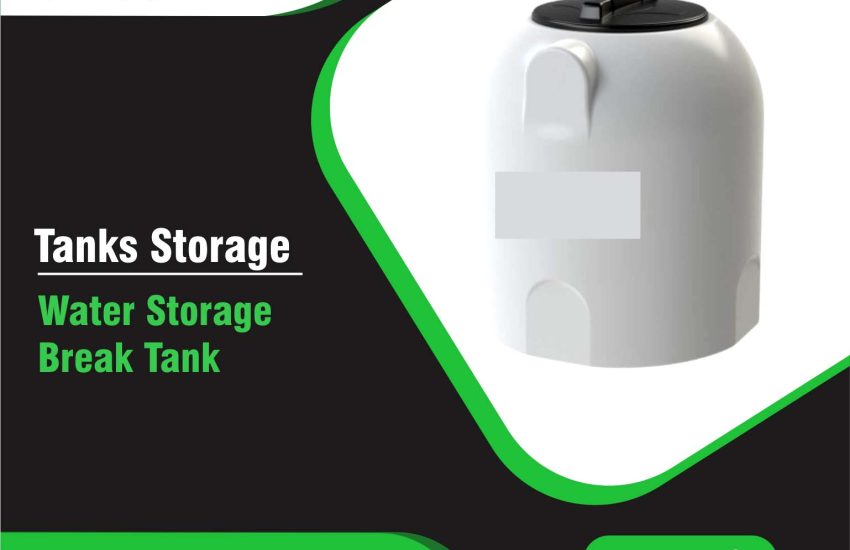Water Storage Break Tank plays a vital role in maintaining a steady water supply, particularly in applications requiring reliable pressure and flow. Commonly used in both residential and commercial settings, this tank serves as a buffer to prevent water supply interruptions. It is crucial for systems where fluctuating water pressure or inconsistent flow may cause damage to pumps or other equipment. This article provides an overview of the Water Storage Break Tank, its specifications, and how it benefits various applications. The content is optimized with SEO-friendly keywords to enhance visibility across search engines.
What is a Water Storage Break Tank?
A Water Storage Break Tank is an essential component in a water distribution system that ensures smooth water flow. It acts as a buffer or intermediary storage between the water supply and the pressure system. Break Tanks are commonly used in situations where a constant water supply is necessary, such as in pressure boosting systems or where water conservation and management are a priority.
Specifications of a Water Storage Break Tank
1. Types of Water Storage Break Tanks
There are several types of Water Storage Break Tanks, each suited for specific applications. The type of tank you choose depends on factors like size, material, and pressure requirements.
- Vertical Break Tanks: These are designed to optimize space and are commonly used in smaller installations.
- Horizontal Break Tanks: Often used when space is more abundant, these tanks offer a larger storage capacity.
- Pump-Assisted Break Tanks: These tanks are equipped with pumps to aid in the efficient movement of water to other parts of the system.
2. Capacity and Size
The size of a Water Storage Break Tank is determined by its intended use and water demand. The capacity of these tanks varies widely, ranging from 100 liters for small residential applications to several thousand liters for industrial and commercial uses. A few examples of common tank capacities include:
- Small Break Tanks: 100 liters to 1,000 liters. These are ideal for residential properties or small commercial establishments.
- Medium Break Tanks: 1,000 liters to 10,000 liters. Suitable for medium-sized businesses, agricultural systems, and municipal applications.
- Large Break Tanks: Over 10,000 liters. Typically used in large industrial settings or municipal water systems requiring substantial water storage.
3. Material Construction
The construction material of a Water Storage Break Tank significantly influences its durability and lifespan. Common materials used include:
- Plastic (Polyethylene): These tanks are lightweight, resistant to corrosion, and cost-effective. They are suitable for both residential and commercial applications.
- Steel (Galvanized or Stainless Steel): Known for strength and durability, steel tanks are often used for industrial-scale water storage.
- Fiberglass: These tanks are corrosion-resistant and are ideal for applications where exposure to chemicals or harsh weather is a concern.
4. Design and Shape
Water Storage Break Tanks come in various shapes, but the most common designs include:
- Cylindrical Break Tanks: Available in both vertical and horizontal configurations, cylindrical tanks maximize storage capacity and space efficiency.
- Rectangular Break Tanks: These tanks are often used when the installation area is constrained or when maximizing available space is crucial.
5. Overflow and Pressure Relief
To ensure the system’s efficiency and avoid water wastage or overflows, Water Storage Break Tanks come with essential features like:
- Overflow Protection: Prevents overfilling and ensures safe water discharge.
- Pressure Relief Valves: These are installed to maintain optimal pressure levels within the system and avoid damage to pumps and plumbing.
6. Water Quality and Maintenance
A key factor in selecting a Water Storage Break Tank is ensuring that it maintains water quality. Many tanks come with features to safeguard the water stored inside:
- UV Protection: Tanks made from UV-resistant material prevent water degradation due to sunlight exposure.
- Air-Tight Seals: Ensures that the water remains free of contaminants such as dust, dirt, and insects.
- Maintenance Access Ports: Easy access points for cleaning and inspecting the interior of the tank.
Key Benefits of Water Storage Break Tanks
- Preventing Pump Damage: By regulating water pressure and maintaining consistent flow, Water Storage Break Tanks help protect pumps and other sensitive equipment from pressure fluctuations that can cause damage.
- Ensuring Constant Water Supply: These tanks help prevent interruptions in water supply by acting as a reserve during periods of high demand or system failure.
- Pressure Boosting: In systems with low water pressure, Water Storage Break Tanks can serve as pressure boosters, improving water flow in the system.
- Water Conservation: Break tanks allow for the efficient storage of water, reducing waste and enabling water conservation measures in both commercial and residential settings.
- Regulated Flow: Break tanks help to regulate the flow of water, ensuring that the system operates at optimal pressure and minimizing the risk of pipeline bursts or leaks.
- Easy Integration: Water Storage Break Tanks are easy to integrate with existing plumbing or pressure systems. They are widely used in a variety of applications, from homes to large industries.
Conclusion
A Water Storage Break Tank is a reliable and essential component for regulating water flow, preventing damage to pumps, and ensuring a steady supply of water. By acting as a buffer, these tanks help maintain consistent water pressure and reduce the risk of water shortages during high-demand periods. Whether for residential, commercial, or industrial use, choosing the right Water Storage Break Tank based on size, material, and features is crucial for achieving efficient water management. Regular maintenance and proper installation ensure optimal performance and longevity.


